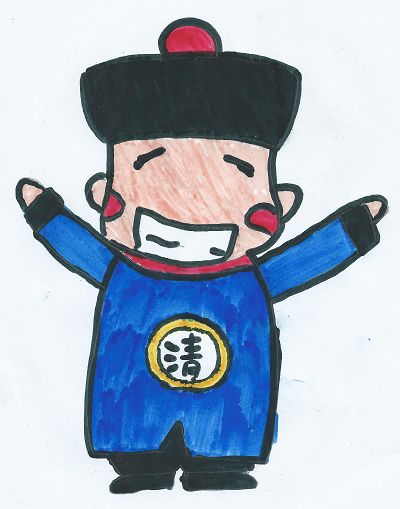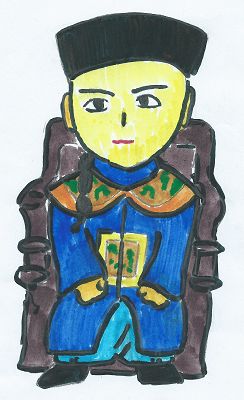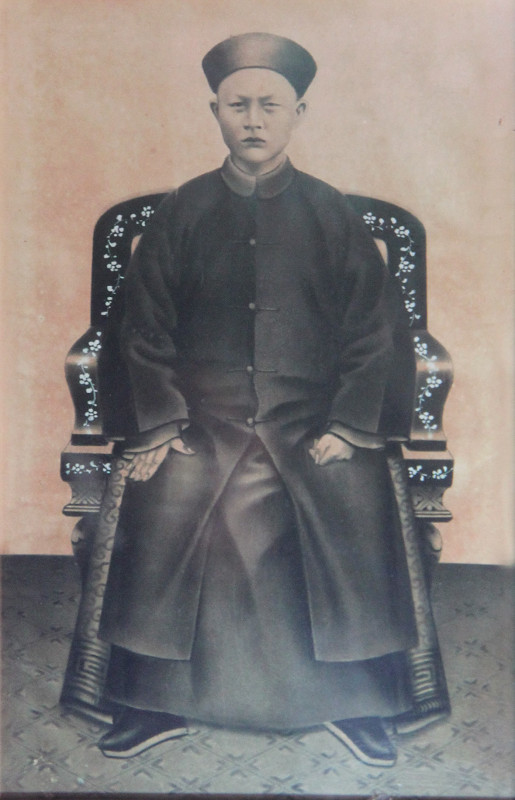|
 
 |
In Xianfeng 2 years of Qing Dynasty (1852),
he was born in Minjian at Nantou County and passed away in Taisho 4 years
(1915), at the age of 63 years. When he was young, he lived with his father Zhen
Yuan Chen in Chushan for long. Afterwards, he encouraged his family members to
move from the old street to the central street in downtown for the frequent
flooding and they have settled down till now. The Chen family is a big family
and Shao-nian Chen was a scholar in Qing Dynasty and a former Changhua County
Confucian discipline director. During the Japanese ruled period, he had
initially returned to mainland China, and then he was appointed as directors in
some institutes of government. And after Ke Iron event (1896) occurred, Chen was
invited to help pacify the event, and thus he was summoned to praise and award
by the Emperor of Japan. Since then, he made a good relationship with the
Japanese government. So he was not only a remnant of the Qing but also an upstart
under the regime of Japan, and thus he became the most representative of the
local influential people.
|
|
Since then Chen successively served in many important
positions in different institutions, his wealth and glory can be described as
remarkable life. His grandson, Jing Sung Chen, was a famous doctor in local
area, and his great-grandson, Shi-ying Chen, served as a former Changhua County
Magistrate, monitors and other staff. A number of generations since Chen are
belonging to the upper class families, and they have a close relationship with the
local development of Tianjhong.
In terms of local
culture and education, Shao-nian Chen in his early years Co-finance together with
the celebrities, such as Hong-miao Chen... et al., to hire private tutors, such
as the famous poet Wang-yun Wu, to give lectures. Furthermore, he co-founded
the Poetry Society - Orchid Club, and served as the first president. Chen, who
had been set on record the works, entitled "Shou Shan Hall poems," to
make a manuscript but did not print and publish. This is also a poet among
orchid society in the past, now known handed down the first and only of a
collection of poems.
|
|
Important Chronology of
Chen and Events of Tianjhong
|
|
Meiji 28(1895)
serve as the chief of the security bureau at
Dongbao in Dongluo
Meiji 29(1896)
serve as the chief of the public discussion administration
in Yunlin, and then join the military to put down the event of Iron Ke.
Meiji 30(1897)
Chen was awarded the noble medal and served as
the counselor in the service office at Beidou.
Meiji 31(1898)
Flood and fire happened to Sha-lun.
Meiji 32(1899)
Floods and fires happened successively.
Meiji 33(1900)
Set the Sha-lun branch of Changhua
Administration (the Old Street now), which is the foundation of Tianjhong.
The opening of the Taiwan railway and the
Tianjhong Station was set up.
Meiji 35(1902)
Shao-nian Chen was recommended to be the leader
of the district Sha-lun and the counselor of Changhua Administration.
Meiji 36(1903)
The Orchid Club was set up in Tianjhong.
Jing Sung Chen was born.
Meiji 37(1904)
Shao-nian Chen serve as the chief of Tianjhong
Meiji 39(1906)
the branch of Er-shuei public school is found to
offer lectures
Meiji 42(1909)
Shao-nian Chen serve as the supervisor of
Changhua Bank and the Sugar Company of Beidou, and the mayor of Tianjhong.
Meiji 44(1911)
Shao-nian Chen serve as the supervisor of
Changhua Bank and the Sugar Company of Beidou, and the mayor of Tianjhong.
Da zheng 3(1914)
The branch was independent of the main campus
and named after Tianjhongyang Public School.
Da zheng4年(1915)
Shao-nian Chen passed away in April at his age
of 63.
Da zheng10年(1921)
The Tiajhongyang Public School was renamed after
Tianjhong Public School.
Da zheng13年甲子(1924)
The Qian-de Temple was refurbished.
Da zheng15年(1926)
The Suger Refinery was founded.
Shi-ying Chen was born.
Zhao he 24(1929)
The station head proposed to set up a warehouse
for the railway in Tianjhong.
Zhao he 25(1930)
A shrine was established in the eastern
middle of the hill. The shrine was the predecessor of Gu-shan Temple.
The opening of Jing Sung Hospital.
|
|
Source: 《Hometown Tianjhong》 by Chin-zhi Liu,
"the History of the Orchid Club in Tianjhong" by Tsui-feng Lin in 《Chinese Journals of Tunghai, 16》
|
















